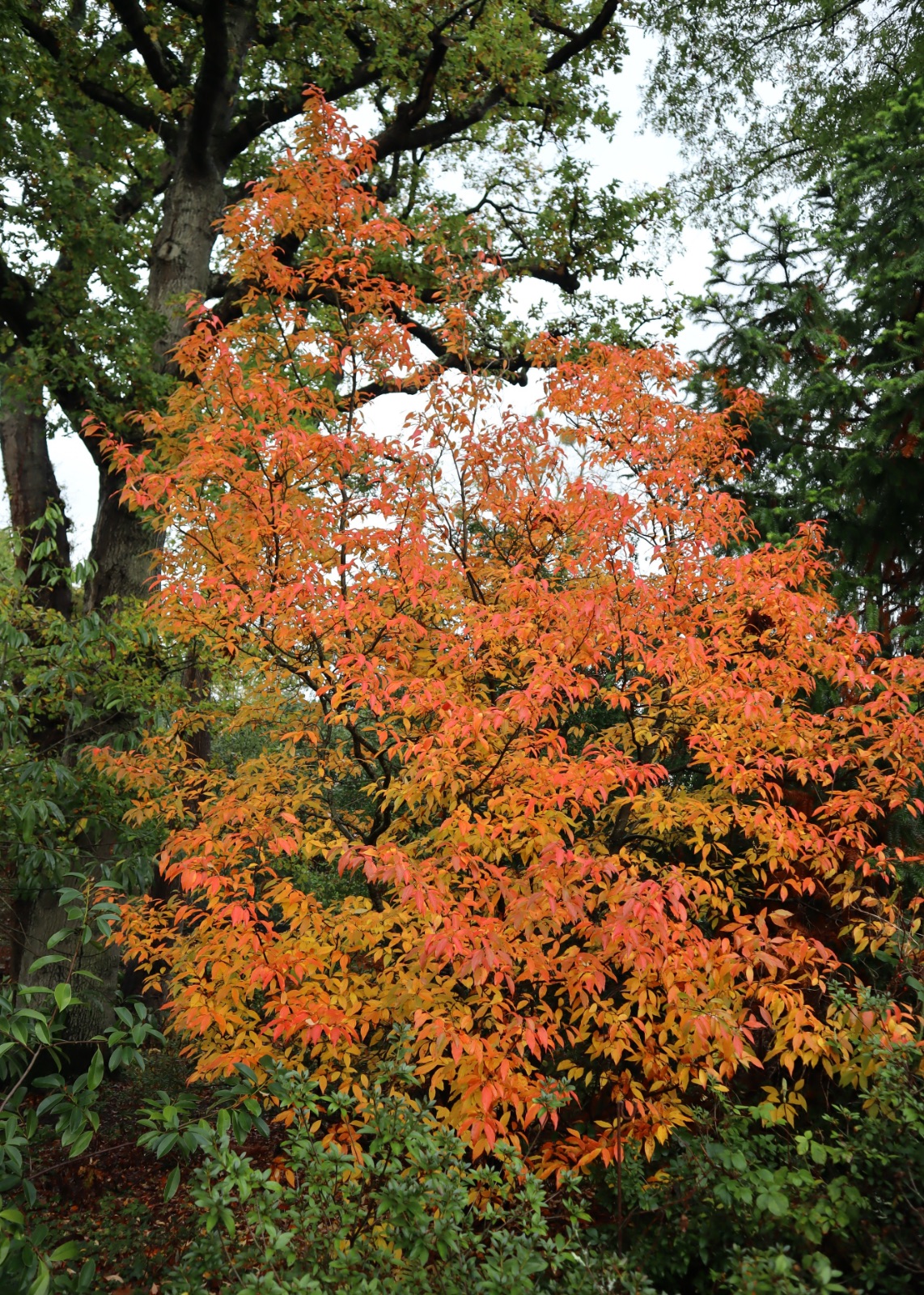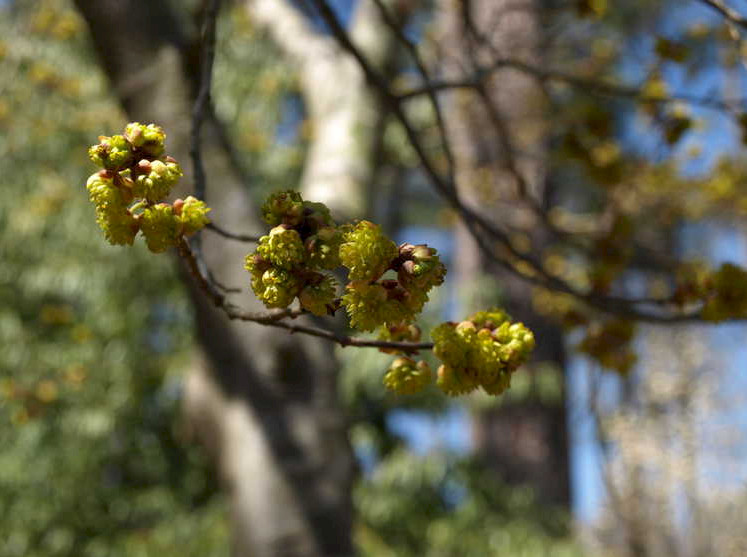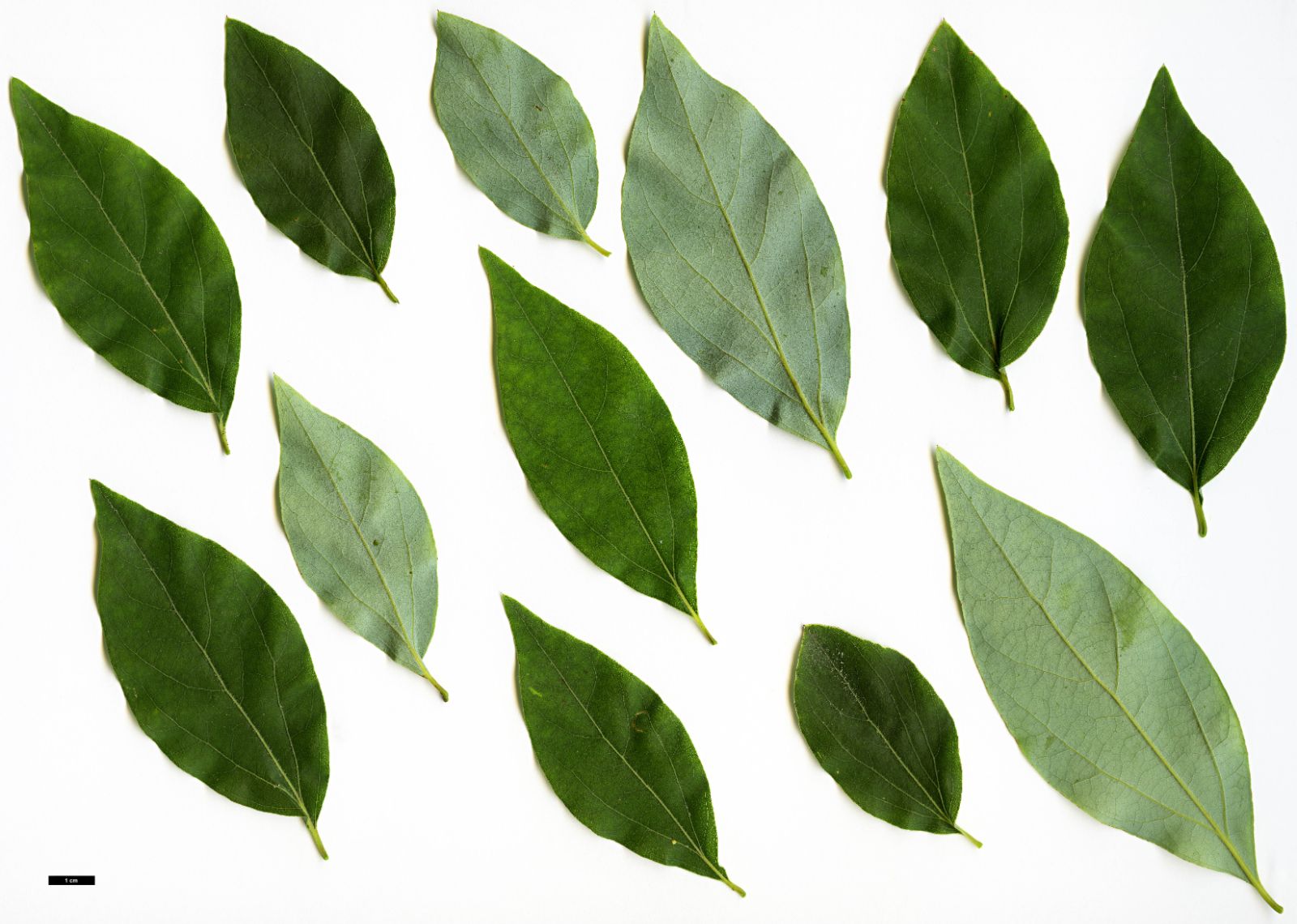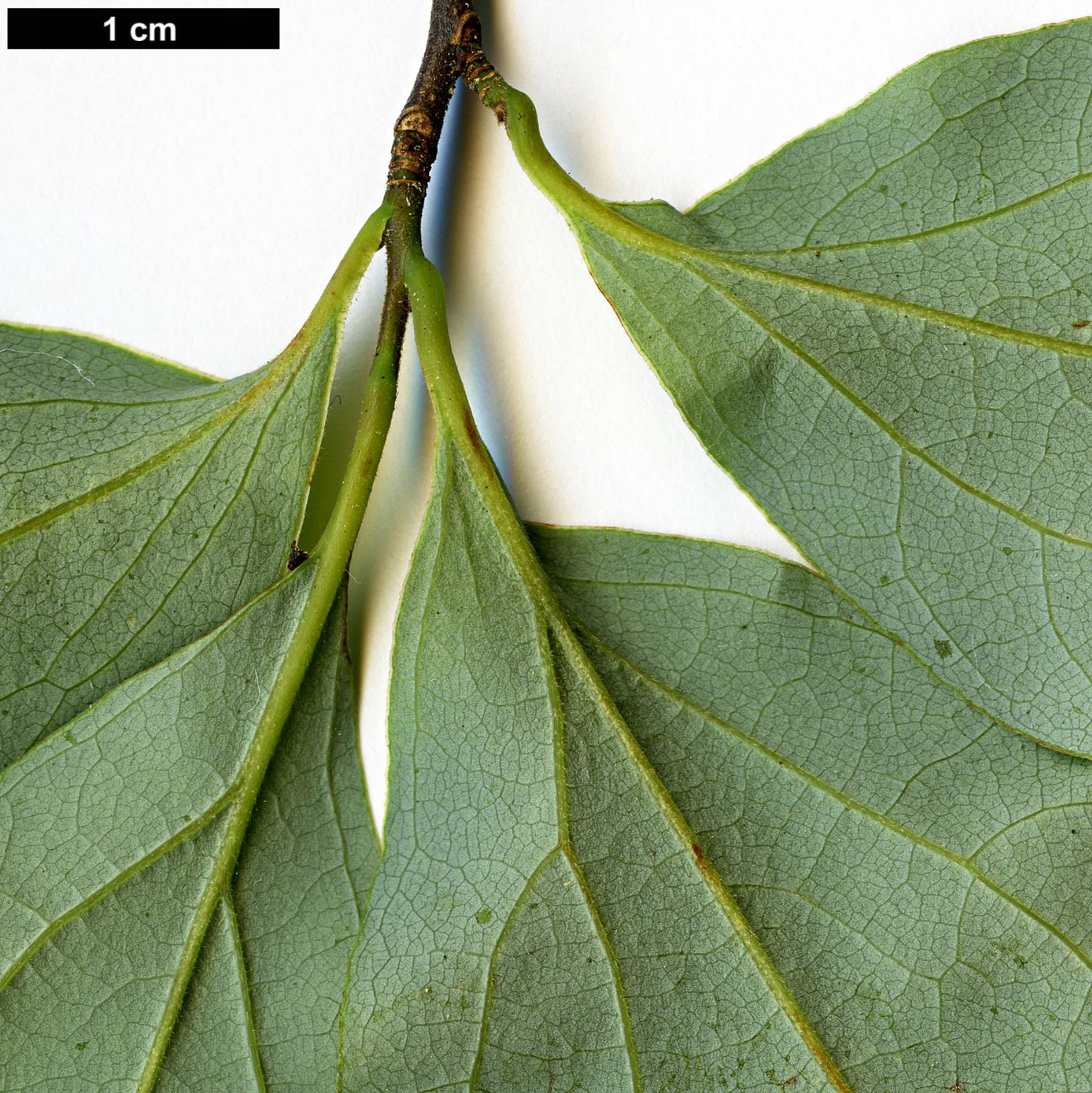Lindera rubronervia
Sponsor
Kindly sponsored by
a member of the International Dendrology Society
Credits
Julian Sutton (2023)
Recommended citation
Sutton, J. (2023), 'Lindera rubronervia' from the website Trees and Shrubs Online (treesandshrubsonline.
Genus
Other taxa in genus
- Lindera aggregata
- Lindera akoensis
- Lindera angustifolia
- Lindera assamica
- Lindera benzoin
- Lindera chienii
- Lindera communis
- Lindera erythrocarpa
- Lindera floribunda
- Lindera fragrans
- Lindera glauca
- Lindera megaphylla
- Lindera melissifolia
- Lindera metcalfiana
- Lindera neesiana
- Lindera obtusiloba
- Lindera praecox
- Lindera pulcherrima
- Lindera reflexa
- Lindera sericea
- Lindera tonkinensis
- Lindera triloba
- Lindera umbellata
Deciduous shrub or small tree to 5 m. Bark dark grey, with lenticels. Young branchlets dark grey or dark brown. Winter buds long-conical, 0.5–0.7 × 0.2–0.3 cm. Leaves triplinerved, usually with 3–4 pairs of lateral veins towards the apex; blade more or less membranous, narrowly ovate to lanceolate, (4–)6–8(–13) × (2–)3–4(–5.5) cm, hairy beneath and on the midrib above; base cuneate; margin entire; apex acuminate; petiole 0.5–1 cm, pubescent. Umbels axillary, either side of leaf buds, on 2 mm peduncles, each umbel with a 8 persistent involucral bracts and 5–8 flowers. Flowers yellow-green; tepals 6, white-hairy at least insid; male flowers with 9 fertile stamens; female flowers with nine reduced, fasciated staminodes and a disc-shaped stigma. Fruit subglobose, ~1 cm across. Flowering March–April, fruiting August–September (China). (Cui & van der Werff 2008).
Distribution China Anhui, Henan, Jiangxi, Jiangsu, Zhejiang
Habitat Forests on mountain slopes, riversides, valleys.
USDA Hardiness Zone 8-9
RHS Hardiness Rating H4
Conservation status Least concern (LC)
In western gardens for nearly 50 years, Lindera rubronervia remains a very rare deciduous shrub. Autumn colour is its overriding attraction.
Among the tri- or triplinerved deciduous species we list, Lindera rubronervia can be distinguished from L. obtusiloba and L. triloba by its more or less ovate leaves, paler beneath, never lobed, with acuminate apices. L. neesiana is much harder to distinguish, and almost as rare in gardens. Flora of China (Cui & van der Werff 2008) suggests that L. rubronervia has triplinerved leaves (cf. tri- or triplinerved in L. neesiana) and umbels on very short peduncles, under 3 mm long (cf. distinctly pedunculate). Large numbers of images identified as these species on the Plantplus website (Chinese Academy of Sciences 2023) give no support to the peduncle-length distinction, but make clear the difference in veining; the two main lateral veins usually meet the midvein at or very near the lamina base in L. neesiana, but well away from the base in L. rubronervia. L. rubronervia is confined to eastern China, while L. neesiana has a much wider distribution. Further careful study of the plants we have is required.
Lindera rubronervia was described from specimens collected July 1907 in Jiangxi by Ernest Wilson (W 1624, 1637) (Sargent 1916). The red veins which inspired the specific name are not characteristic of the leaves in summer (Chinese Academy of Sciences 2023); Wilson’s specimens had black fruit, and perhaps the leaves were already beginning to age and colour. There is no evidence that seed was gathered. Today’s garden plants probably originate from botanic garden seed exchanges. Several specimens grow at the Sir Harold Hillier Gardens, Hampshire, UK; the oldest dates from 1976. They reliably colour to a striking orange-red in autumn, and are ‘really beautiful’ (B. Clarke pers. comm. 2023). At least one of these accessions was as seed from Hangzhou Botanical Garden. A search of social media images suggests that the species is also grown at low levels in serious private collections in France and Spain. In our North American area it grows in Washington Park, Seattle (University of Washington Botanic Gardens 2023) and at the private Keith Arboretum, NC (JC Raulston Arboretum 2023). Raulston (1993) mentions it as grown by Camellia Forest Nursery, NC, who introduced many rare linderas from East Asian botanic gardens in the 1980s. It is unlikely to prove hardy in colder parts of Europe or North America.
Propagating such a desirable species should be a priority. In the absence of seed-producing garden populations, experiments with grafting or even tissue culture might be worthwhile.









